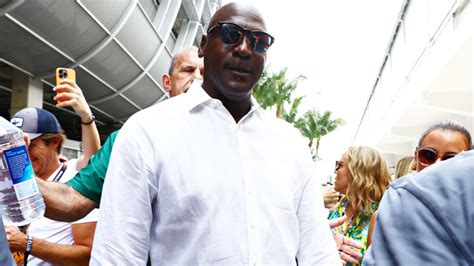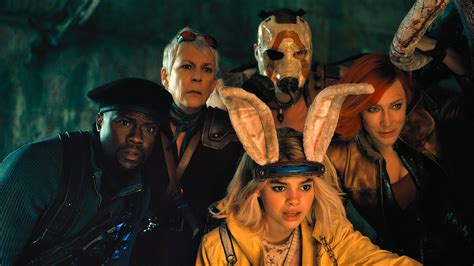
John Mulaney’s recent stand-up routine has sparked debate after a video clip surfaced showing him recounting a physical altercation with three teenagers, lasting a reported 47 seconds. The bit, now circulating widely online, has drawn a mixed response, with some finding humor in the comedian’s self-deprecating delivery, while others criticize the anecdote as insensitive and potentially glorifying violence.
The clip, taken from a performance at the Ryman Auditorium in Nashville, TN, features Mulaney describing an incident where he confronted a group of teenagers allegedly harassing an elderly woman. According to Mulaney’s account, the confrontation escalated into a brief physical altercation, which he narrates with comedic timing and exaggerated details. “I was walking down the street, and I saw three teenagers accosting an elderly woman,” Mulaney reportedly said in the routine. “I intervened, and things got… physical.” He goes on to describe the ensuing scuffle, emphasizing his own awkwardness and lack of fighting prowess.
The controversy surrounding the bit centers on whether Mulaney’s comedic portrayal of the incident trivializes violence or if it’s simply an exaggerated comedic narrative intended for entertainment. Critics argue that the story normalizes physical confrontation and sends the wrong message, particularly given Mulaney’s large following, which includes younger audiences. Supporters, however, contend that Mulaney’s humor relies on self-deprecation and that the story is clearly intended as a comedic exaggeration, not an endorsement of violence.
The reaction to the clip has been varied across social media platforms. Some users have expressed disappointment, calling the bit “tone-deaf” and “irresponsible.” Others have defended Mulaney, arguing that comedians often use potentially controversial material for comedic effect and that audiences should be able to distinguish between a joke and a serious endorsement of violence.
Representatives for Mulaney have not yet released an official statement regarding the controversy.
Details of the Incident (As Described in the Routine)
Mulaney’s comedic recounting paints a picture of a chaotic and somewhat absurd encounter. While the specific details are delivered with comedic embellishments, the core narrative remains consistent across various reports and viewer accounts.
According to Mulaney, the incident began when he observed three teenagers allegedly harassing an elderly woman on the street. Feeling compelled to intervene, Mulaney approached the group and verbally confronted them. The situation quickly escalated, leading to a physical altercation.
Mulaney describes himself as being ill-equipped for the fight, emphasizing his lack of physical strength and fighting skills. He recounts flailing awkwardly and struggling to defend himself against the teenagers, who he portrays as being significantly younger and more agile. The comedian uses vivid language and exaggerated gestures to depict the chaotic nature of the brawl, highlighting the absurdity of the situation.
The routine includes anecdotes about specific moments during the fight, such as Mulaney tripping over his own feet, accidentally hitting himself, and making awkward attempts to intimidate his opponents. He also describes the teenagers’ reactions to his clumsy fighting style, suggesting that they were more amused than threatened by his efforts.
Throughout the recounting, Mulaney maintains a self-deprecating tone, portraying himself as an unlikely and ineffective hero. He emphasizes the comedic aspects of the situation, such as the contrast between his intentions and his actual performance, and the unexpected turns the fight took.
The entire altercation, according to Mulaney’s account, lasted approximately 47 seconds. He concludes the story by suggesting that the teenagers eventually dispersed, and the elderly woman was unharmed. However, he refrains from presenting himself as a triumphant hero, instead focusing on the comedic absurdity of the experience.
Social Media Reactions and Commentary
The 47-second clip has triggered a wave of responses across various social media platforms, reflecting a diverse range of opinions.
Many users have expressed disappointment and criticism, accusing Mulaney of promoting violence and insensitivity. Some have argued that the bit is particularly problematic given Mulaney’s widespread appeal, including among younger audiences. These critics suggest that the comedian has a responsibility to be mindful of the messages he conveys and that the routine could normalize or encourage violent behavior.
One Twitter user wrote, “I used to be a big fan of Mulaney, but this story about him fighting teenagers is just not funny. It’s tone-deaf and irresponsible.” Another commented, “I don’t get why everyone is laughing at this. It’s not okay to glorify violence, even if it’s in a comedic context.”
Conversely, a significant number of users have defended Mulaney, arguing that the routine is clearly intended as a joke and that audiences should be able to distinguish between comedic exaggeration and real-world endorsement of violence. These supporters emphasize Mulaney’s history of self-deprecating humor and suggest that the story is meant to poke fun at himself, rather than to promote violence.
One Reddit user stated, “People are taking this way too seriously. It’s a comedy bit. Mulaney is clearly making fun of himself and the absurdity of the situation.” Another added, “If you can’t tell that this is a joke, you’re missing the point. Mulaney is not saying that everyone should go around fighting teenagers.”
Some commentators have also pointed out that the context of the routine is crucial to understanding its intent. They argue that Mulaney’s comedic style often involves exaggerating personal experiences and using self-deprecation to create humor. They suggest that the audience is meant to laugh at Mulaney’s awkwardness and ineptitude, rather than to condone violence.
The debate surrounding the Mulaney clip highlights the challenges of navigating sensitive topics in comedy and the potential for misinterpretation, particularly in the age of social media.
Comedic Context and Mulaney’s Style
To fully understand the controversy, it is important to consider John Mulaney’s established comedic style. Mulaney is known for his observational humor, self-deprecating anecdotes, and clean, often innocent-seeming delivery, which often belies darker or more complex themes. His comedy often revolves around personal experiences, which he exaggerates and embellishes for comedic effect.
Mulaney’s routines frequently explore themes of anxiety, awkwardness, and personal failings. He often portrays himself as an unlikely or inept character, highlighting his own shortcomings and vulnerabilities. This self-deprecating approach is a key element of his comedic persona and is often used to create humor out of potentially uncomfortable or sensitive situations.
In the context of the “teen brawl” routine, Mulaney’s self-deprecation is evident in his portrayal of himself as an ill-equipped and clumsy fighter. He emphasizes his lack of physical strength and fighting skills, highlighting the absurdity of his attempt to intervene in a physical altercation. This portrayal aligns with his broader comedic style of presenting himself as an unlikely or ineffective hero.
Furthermore, Mulaney’s comedic timing and delivery play a crucial role in shaping the audience’s perception of the routine. His use of pauses, facial expressions, and vocal inflections helps to create a sense of comedic exaggeration and absurdity. These techniques signal to the audience that the story is meant to be taken as a joke, rather than as a serious endorsement of violence.
However, even within the context of Mulaney’s established comedic style, the “teen brawl” routine has raised questions about the limits of humor and the potential for misinterpretation. Some critics argue that the routine crosses the line by trivializing violence and potentially normalizing harmful behavior. They suggest that Mulaney’s comedic style, while often effective, may not always be appropriate for addressing sensitive topics.
Ethical Considerations in Comedy
The controversy surrounding Mulaney’s routine raises broader ethical considerations about the role of comedy in society. Comedians often push boundaries and challenge social norms, using humor to explore difficult or uncomfortable topics. However, this freedom comes with a responsibility to be mindful of the potential impact of their words.
One of the key ethical considerations in comedy is the potential for harm. Jokes that are perceived as offensive, discriminatory, or insensitive can have a negative impact on individuals and communities. Comedians must weigh the potential for humor against the potential for harm when crafting their routines.
Another ethical consideration is the issue of power dynamics. Comedians who hold positions of power or influence have a greater responsibility to be mindful of the messages they convey. Jokes that reinforce harmful stereotypes or perpetuate inequalities can be particularly damaging when they come from individuals with a large platform.
The debate surrounding Mulaney’s routine highlights the complexities of navigating these ethical considerations. While some argue that the routine is simply a harmless joke, others contend that it crosses the line by trivializing violence and potentially normalizing harmful behavior. These differing perspectives reflect the subjective nature of humor and the challenges of determining what is and is not acceptable in comedy.
Ultimately, the ethical responsibility lies with the comedian to consider the potential impact of their words and to make informed decisions about the material they choose to present. Audiences also have a role to play in holding comedians accountable for their actions and in engaging in critical dialogue about the role of comedy in society.
The Ryman Auditorium Performance Context
The specific venue and audience at the Ryman Auditorium in Nashville, TN, also add context to the performance. The Ryman Auditorium, known as the “Mother Church of Country Music,” is a historic venue with a reputation for hosting a wide range of performances, from country music legends to contemporary comedians. The audience at the Ryman is typically diverse, comprising both locals and tourists, and spanning a range of ages and backgrounds.
Mulaney’s decision to include the “teen brawl” routine in his performance at the Ryman suggests that he believed the material would resonate with the audience. However, the diverse nature of the audience also means that there was a greater potential for the routine to be misinterpreted or to offend some individuals.
The fact that the clip of the routine has gone viral suggests that it has struck a chord with a wider audience beyond those who attended the Ryman performance. The online circulation of the clip has amplified the debate surrounding the routine and has exposed it to a broader range of perspectives.
Potential Legal Ramifications (Speculative)
While there have been no reports of legal action taken against Mulaney as a result of the described incident, it is worth considering the potential legal ramifications, based solely on the information provided in his comedic retelling. It is important to emphasize that this is purely speculative and for informational purposes only.
If the events as described in the routine were accurate and not exaggerated for comedic effect, Mulaney could potentially face legal consequences for his actions. Depending on the jurisdiction and the specific details of the incident, he could be charged with offenses such as assault, battery, or even contributing to the delinquency of minors.
The teenagers involved in the altercation could also potentially face legal consequences for their actions. If they were, in fact, harassing an elderly woman, they could be charged with offenses such as harassment, disorderly conduct, or even elder abuse. Their involvement in the physical altercation could also lead to charges of assault or battery.
The elderly woman who was allegedly being harassed could also potentially be considered a victim of a crime. Depending on the nature of the harassment, she could be entitled to seek legal remedies, such as a restraining order or compensation for damages.
It is important to reiterate that these are purely speculative scenarios based on the limited information available. The actual legal consequences, if any, would depend on a thorough investigation of the incident and the specific laws of the jurisdiction in which it occurred. Furthermore, the comedic nature of Mulaney’s recounting makes it difficult to determine the accuracy of the events described.
The Role of Exaggeration in Comedy
Exaggeration is a fundamental tool in the comedian’s arsenal. It allows them to amplify the humor in everyday situations, create absurd scenarios, and highlight the ridiculousness of human behavior. By exaggerating certain aspects of a story, comedians can make it more engaging, memorable, and, ultimately, funnier.
However, exaggeration also carries risks. When a comedian exaggerates a sensitive topic, they run the risk of trivializing it or offending members of the audience. It is important for comedians to be aware of these risks and to use exaggeration responsibly.
In the case of Mulaney’s “teen brawl” routine, exaggeration is clearly a key element of the humor. Mulaney exaggerates his own ineptitude as a fighter, the chaos of the altercation, and the reactions of the teenagers involved. These exaggerations contribute to the overall comedic effect of the routine.
However, some critics argue that the exaggeration in the routine goes too far, trivializing the issue of violence and potentially normalizing harmful behavior. They suggest that Mulaney should have been more mindful of the potential impact of his words and should have avoided exaggerating the violence in the story.
The Impact of Social Media on Comedy
Social media has profoundly impacted the world of comedy. It has provided comedians with new platforms to share their work, connect with audiences, and build their brand. However, it has also created new challenges, such as the potential for jokes to be taken out of context, the increased scrutiny of comedians’ personal lives, and the pressure to constantly produce new content.
The controversy surrounding Mulaney’s routine is a clear example of the impact of social media on comedy. The clip of the routine went viral, sparking a widespread debate about its appropriateness and its potential impact on audiences. The debate played out across various social media platforms, with users expressing a wide range of opinions.
Social media can amplify the reach of a joke, but it can also amplify the criticism. Comedians must be prepared to face both the positive and negative consequences of sharing their work online. They must also be mindful of the potential for their jokes to be misinterpreted or taken out of context.
FAQ Section
1. What is the controversy surrounding John Mulaney’s “teen brawl” routine?
The controversy stems from a 47-second clip of Mulaney’s stand-up routine where he recounts a physical altercation with three teenagers after intervening in what he perceived as their harassment of an elderly woman. Some viewers find the bit humorous due to Mulaney’s self-deprecating delivery and exaggerated storytelling, while others criticize it as insensitive, potentially glorifying violence, and irresponsible given his wide audience, including younger fans.
2. What exactly did Mulaney say in the routine?
While the exact wording varies across reports and viewer accounts, the core narrative is consistent. Mulaney described seeing teenagers “accosting an elderly woman,” intervening, and the situation escalating into a brief, clumsy physical fight. He emphasizes his lack of fighting skills and the awkwardness of the encounter, using vivid language and exaggerated gestures to depict the chaotic nature of the brawl. He never explicitly advocates for violence; instead, he frames the story with self-deprecating humor.
3. What are people saying on social media about the routine?
Social media reactions are divided. Critics label the bit “tone-deaf” and “irresponsible,” arguing that it normalizes violence. Supporters defend Mulaney, stating that it is clearly a comedic exaggeration and that audiences should be able to differentiate between a joke and a serious endorsement of violence. Some emphasize Mulaney’s history of self-deprecating humor as a key element of the bit’s intent.
4. Has John Mulaney responded to the controversy?
As of the latest reports, representatives for John Mulaney have not released an official statement regarding the controversy. The absence of a public response has fueled further debate and speculation about his perspective on the criticism.
5. Could Mulaney face legal repercussions for the incident described in the routine?
While purely speculative and based on Mulaney’s comedic retelling, potential legal ramifications could include charges of assault or battery, depending on the accuracy of the events and the jurisdiction’s laws. The teenagers involved could also face charges for harassment or assault. However, the comedic nature of the recounting makes it difficult to verify the accuracy of the events described.









